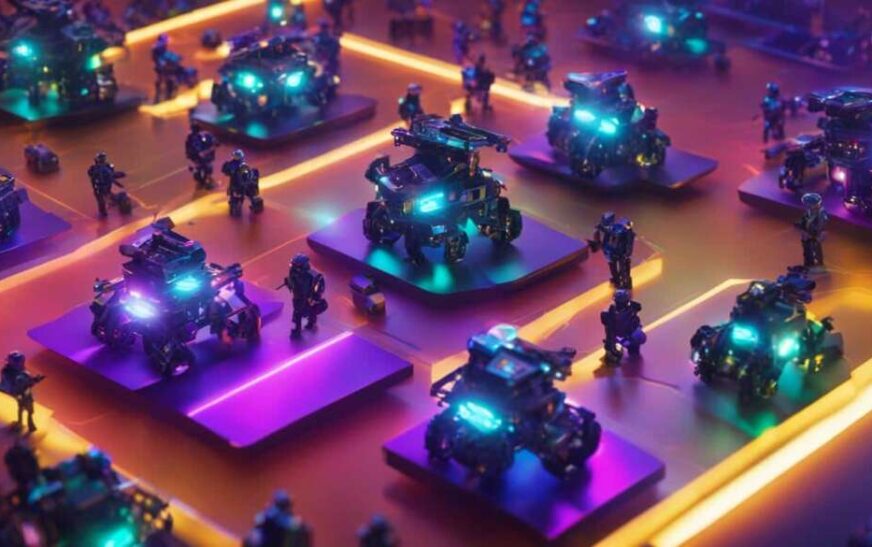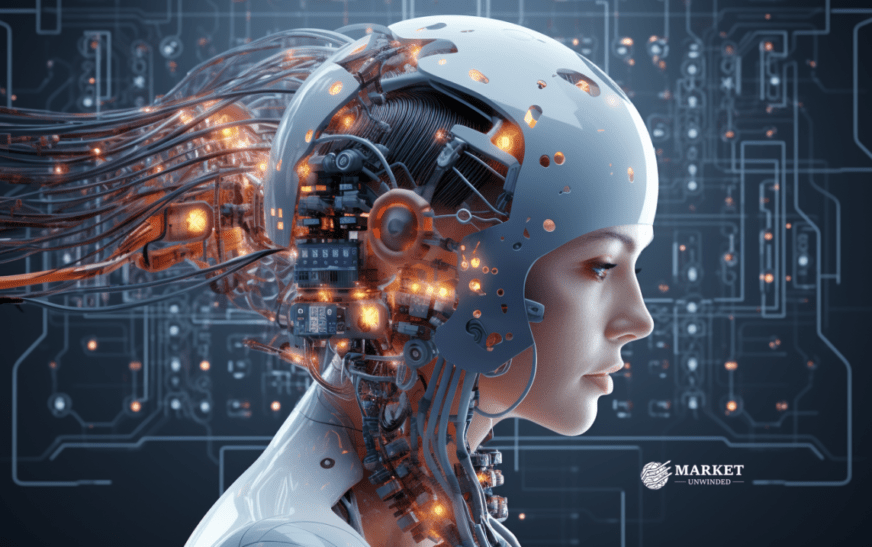Introduction to Swarm Robotics
Imagine a world where robots work together seamlessly, much like a swarm of bees or a flock of birds. This is the fascinating realm of swarm robotics—a field that leverages coordinated behavior to achieve complex tasks through the collective action of multiple robotic units.
Instead of relying on a single robot with advanced capabilities, these systems thrive on simplicity and collaboration, mimicking natural behaviors found in nature.
Swarm robotics has evolved dramatically over the years, reflecting our growing understanding of how small agents can accomplish great things when they operate in unison. As technology advances and our ability to harness group intelligence improves, the possibilities for swarm robotics seem endless.
From agriculture to disaster response and beyond, this innovative approach is reshaping industries and redefining what robots can do.
Curious about how swarm robotics works? Join us as we dive deeper into its history, benefits, applications across various sectors, challenges faced by developers, and what lies ahead for this revolutionary technology.
Prepare yourself for an enlightening journey into the future where teamwork isn’t just for humans anymore!

History of Swarm Robotics and its Evolution
Swarm robotics traces its roots back to the early concepts of collective behavior found in nature. Researchers were fascinated by how insects, like ants or bees, coordinated their activities without central control. This mimicry led scientists to explore ways robots could work together in a similar manner.
The 1980s saw initial experiments with decentralized systems and simple algorithms driving robotic swarms. These early models demonstrated basic communication and task-sharing capabilities among robots.
Advancements continued through the late 1990s as computational power increased. Scientists began developing more complex behaviors using swarm intelligence principles derived from biological systems.
Today, swarm robotics has evolved into a field that combines artificial intelligence with real-time data processing. Modern applications range from drone fleets for agriculture to autonomous vehicles navigating urban environments, showcasing the incredible potential of coordinated robotic systems inspired by nature’s designs.

Benefits of Using Swarm Robotics Systems
Swarm robotics systems offer remarkable advantages across various sectors. One standout benefit is their ability to perform tasks in a coordinated manner. By mimicking natural behaviors observed in species like ants or bees, these robots can efficiently tackle complex challenges.
Another significant advantage lies in scalability. As the need for robotic intervention grows, swarm robots can easily be added to existing systems without extensive reprogramming.
In addition, resilience shines through as individual failures don’t impact overall performance. If one robot malfunctions, the remaining units continue operations seamlessly.
Cost-effectiveness also plays a crucial role. Swarm robotics often require less sophisticated technology per unit while collectively enhancing productivity levels significantly.
Their adaptability allows them to respond dynamically to changing environments and unexpected situations, making them invaluable tools in industries ranging from agriculture to disaster recovery.

Applications of Swarm Robotics in Different Industries
Swarm robotics is making waves across various industries, showcasing its versatility and efficiency. In agriculture, these coordinated systems of robots can monitor crop health or plant seeds in a synchronized manner, optimizing yields while reducing labor costs.
In search and rescue missions, swarm robots work together to navigate challenging terrains. They mimic natural behaviors found in nature to locate victims more effectively than individual robots could.
The logistics sector also benefits from swarm technology. Automated drones deliver packages efficiently by coordinating their routes in real-time, ensuring timely deliveries without human intervention.
Even environmental monitoring has seen advancements thanks to swarm robotics. These systems can deploy sensors over vast areas for data collection on air quality or wildlife tracking, enhancing conservation efforts through collaborative behavior.
With endless possibilities emerging daily, the impact of swarm robotics continues to grow across multiple sectors.

Challenges and Limitations of Swarm Robotics
Swarm robotics holds immense potential, yet it faces several challenges and limitations. One significant hurdle is communication among robots. In a coordinated manner, they need to exchange information efficiently. Any disruption can hinder their collective performance.
Another issue is scalability. As the number of robots increases, maintaining effective coordination becomes complex. Algorithms that work for a small group may falter with larger swarms.
Energy consumption also poses concerns. Swarm robots often require substantial power, especially during extended missions or in challenging environments.
Additionally, unexpected environmental variables can disrupt pre-planned behaviors. Robust adaptability is crucial but remains an area requiring further research and development.
Ethical considerations arise when deploying swarm robotics in sensitive areas like defense or surveillance. Balancing technological advancement with societal impact will be key moving forward.

Collaborative Robots vs. Swarm Robots: What’s the Difference?
Collaborative robots, or co bots, are designed to work alongside humans. They assist with tasks that require precision and strength but often need a human operator for supervision. These machines excel in environments where teamwork is essential, enhancing productivity without replacing the workforce.
Swarm robots take a different approach. They operate as a decentralized system of multiple units working together in a coordinated manner. Their design mimics natural behaviors seen in swarms of insects or schools of fish. Instead of relying on human oversight, swarm robots communicate amongst themselves to adapt to changing conditions.
While cobots focus on direct collaboration with people, swarm robotics emphasizes autonomous coordination among numerous small units. Each type has its own strengths and ideal use cases—cobots shine in intricate tasks needing guidance while swarm systems tackle complex challenges by leveraging collective intelligence.

Future of Swarm Robotics and its Impact on Society
The future of swarm robotics holds incredible promise. As technology advances, we can expect these coordinated systems to become more sophisticated and efficient.
Imagine fleets of drones navigating urban landscapes, delivering goods seamlessly while mimicking the behaviors of natural swarms. Their ability to work in tandem could revolutionize logistics and transportation.
In healthcare, swarm robots may assist in surgeries or manage hospital logistics by working together harmoniously. This collaborative approach could enhance patient care and streamline operations.
Research is also focusing on environmental applications. Swarm robotics can monitor ecosystems or even clean up pollutants, acting as a unified force for ecological preservation.
As these technologies develop, ethical considerations will play a crucial role. Society must navigate the balance between innovation and responsibility to ensure that swarm robotics serve humanity’s best interests without compromising safety or privacy.

Conclusion
Swarm robotics is transforming the way we think about automation and collaboration. The potential for these systems is vast, paving new paths in various fields.
As technology advances, the capabilities of swarm robots will only improve. These coordinated units can adapt to their environments, mimicking natural behaviors seen in schools of fish or flocks of birds.
The ongoing research opens doors to innovations that could change industries from agriculture to disaster response. Each development brings us closer to harnessing collective intelligence through robotic systems.
Society stands on the brink of a revolution driven by these technologies. Embracing swarm robotics means embracing efficiency and adaptability at an unprecedented scale.
The journey ahead promises exciting opportunities as we explore what’s possible when machines work together harmoniously.
Introduction to Swarm Robotics
Swarm robotics is an exciting field that focuses on coordinating multiple robots to work together harmoniously. Inspired by nature, these systems mimic behaviors observed in social organisms like ants and bees.
Each robot operates independently but contributes to a collective goal. This decentralized approach allows for flexibility and adaptability in various environments.
Unlike traditional robotics, where one unit often controls the operation, swarm robots communicate with each other. They share information seamlessly, enabling them to tackle complex tasks efficiently.
This unique methodology opens doors to innovative solutions across numerous industries—from agriculture to disaster response—transforming the way we interact with technology and our surroundings. As this field continues evolving, it holds immense potential for advancements that could reshape our world dramatically.
Advantages of Swarm Robotics
Swarm robotics offers remarkable advantages that stem from the coordinated behaviors of multiple robots. By mimicking natural systems, these robotic units can accomplish complex tasks more efficiently than single robots.
One key advantage is scalability. Adding more robots to a swarm enhances its capabilities without significant changes in system design. This flexibility allows for adjustments based on task requirements or environmental conditions.
Another benefit lies in redundancy. If one robot fails, others can seamlessly take over its responsibilities, ensuring continuity and reliability in operations.
Swarm robotics also excels in exploration and coverage tasks. The distributed approach enables teams to cover larger areas rapidly while gathering data or performing inspections.
Moreover, their low cost makes them accessible for various applications—from agriculture to disaster response—enabling industries to leverage advanced technology without substantial investment risks. The potential impact on efficiency and productivity across sectors is monumental.
Types of Swarm Robots
Swarm robots come in various types, each designed to tackle specific tasks. These robotic systems often mimic natural behaviors like those seen in ant colonies or flocks of birds.
One common type is aerial drones that work collaboratively for tasks such as surveying large areas or conducting search-and-rescue missions. Equipped with sensors and cameras, they communicate seamlessly to cover vast terrains efficiently.
Ground-based swarm robots are another category. They can navigate complex environments, perfect for agriculture or environmental monitoring. With coordinated movement patterns, they optimize resource use while minimizing human intervention.
Underwater swarm robotics is also gaining traction. These robots explore ocean depths and monitor marine life by working together without losing valuable data during their mission.
Each type showcases the versatility of swarm technology, offering innovative solutions across multiple industries while highlighting the power of collaboration among machines.
Applications of Swarm Robotics
Swarm robotics is making waves across various industries. Its ability to coordinate multiple robots in a synchronized manner provides innovative solutions.
In agriculture, swarm robots efficiently monitor crop health and optimize irrigation systems. They can cover large areas quickly, providing real-time data for farmers.
Disaster response teams use these robotic swarms to navigate hazardous environments. Their collaborative nature allows them to search for survivors or assess damage more effectively than single units could.
The entertainment industry also benefits from swarm robotics. Drones working together can create mesmerizing light shows that captivate audiences worldwide.
Even healthcare isn’t untouched by this technology. Swarm robots assist in surgeries, enabling precision and accuracy through coordinated movements that mimic skilled human hands.
These applications showcase the potential of swarm robotics in transforming how we approach complex tasks across diverse fields.
Challenges and Limitations of Swarm Robotics
Swarm robotics holds immense promise, yet it is not without its challenges. One major hurdle is the complexity of coordination among multiple robots. Ensuring they can communicate effectively and respond to each other in a coordinated manner requires sophisticated algorithms.
Another limitation lies in environmental adaptability. Swarm robots often struggle with unexpected obstacles or changes in their surroundings. This unpredictability can hinder their performance and efficiency.
Additionally, power management poses significant issues. As these systems work together tirelessly, ensuring that each unit has sufficient energy becomes critical for maintaining functionality across the swarm.
Moreover, safety concerns arise when deploying swarm robots near humans or sensitive equipment. The lack of centralized control can lead to unpredictable behaviors that may pose risks if not properly managed.
Ethical considerations emerge as society grapples with how autonomous systems mimic natural behaviors while navigating human environments responsibly.
Future Possibilities for Swarm Robotics
The future of swarm robotics holds immense potential. As technology advances, these systems will become even more sophisticated. Imagine drones collaborating seamlessly to monitor vast agricultural fields. Their coordinated movements could increase efficiency and yield.
In urban settings, swarm robots might tackle complex tasks like waste management or traffic control. By mimicking natural behaviors, such as the way ants find food, they can adapt in real-time to changing environments.
Moreover, integrating artificial intelligence will enhance decision-making capabilities. Swarm robots could learn from their surroundings and evolve based on previous experiences.
Healthcare also stands to benefit significantly from this innovation. Small robotic swarms may assist in surgery or deliver medication within intricate human anatomy.
With ongoing research and development, the possibilities are endless—redefining how we approach challenges across industries while emphasizing collaboration over individual effort.
Conclusion
Swarm robotics represents a fascinating frontier in the world of technology. By employing systems of robots that work together in a coordinated manner, this field mimics behaviors found in nature, such as those displayed by insects like ants and bees. The ability for these robots to collaborate enhances their efficiency and effectiveness across various tasks.
The advantages of swarm robotics are clear. They offer scalability, redundancy, and adaptability—traits essential for tackling complex challenges. From healthcare to agriculture and disaster response, the applications are diverse and impactful.
Despite its promise, swarm robotics faces hurdles that need addressing. Issues such as communication limitations among robots or difficulties with environmental navigation can hinder performance. Understanding these challenges is crucial for future developments.
As we look ahead, the potential for swarm robotics seems limitless. Continued research could lead to groundbreaking innovations that further integrate robotic systems into our daily lives while enhancing productivity across industries.
The journey of swarm robotics is just beginning; its evolution will undoubtedly shape how we interact with machines in ways we have yet to imagine.






